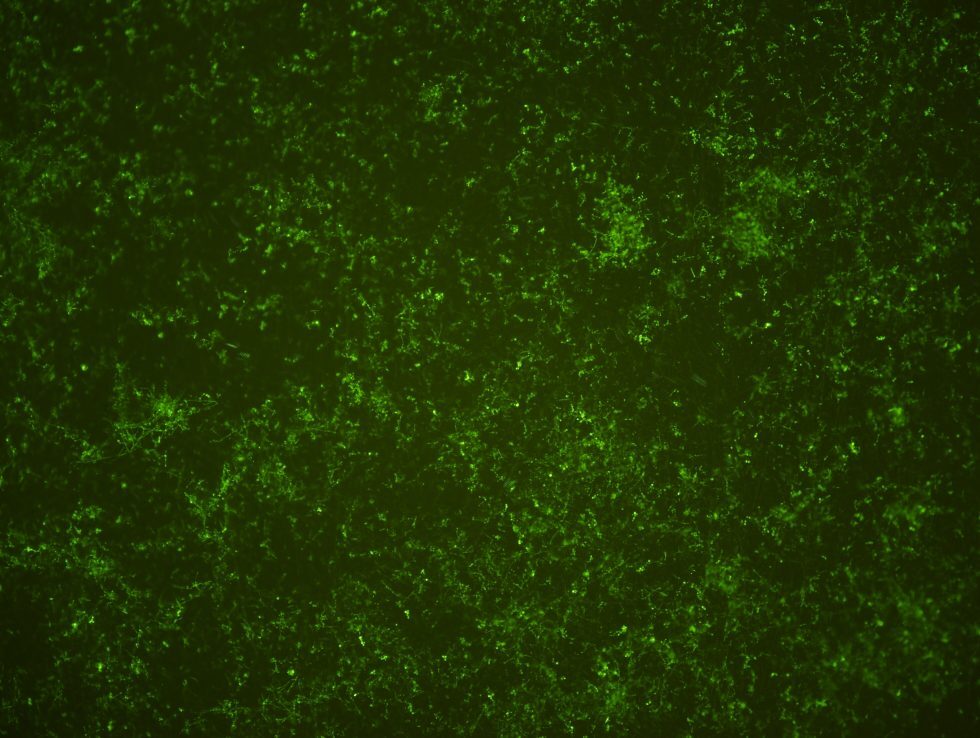For biological science (cells and bacteria):
- Confocal Laser scanning microscope, CLSM, system FV1200, Olympus BX61WI, equipped with two lasers, a diode laser emitting at 473 nm and a helium-neon laser emitting at 543 nm, 10X and 60X with oil or water (see NIOM Newsletter August 2016).
- Fluorescence microscope: Olympus BX51 with 10X, 40X/oil and 100X/oil objectives, filters for UV excitation, blue excitation and green excitation and a DP70 camera.
- Inverted microscope with phase contrast: Olympus CX41 with 4X, 10X and 20X objectives and Olympus C-7070 camera.

For material science (polymers, metals, alloys and ceramics):
- Inverted microscope, Nikon Epiphot with 5X, 10X, 20X, 40X, and 100X objectives and accessories like analyzer, polarizer, first order red compensator with λ-filter and dark-field, Numarski prisms, scale bar and a SPOT RT digital camera.
- Profile projector, Nikon with 10X mirror, 50X and 100X objectives and the accessories: Two illumination systems – surface and contour, micrometer, X- and Y-measurements and condenser lever with anti-glare filter.
- Photo macroscope, Wild M400, Wild-Leitz with Macrozoom lens 6,3X – 32 X and two adaptors, ½X and 2X, two illuminations, Intralux 250 HL, Volpi and EasyLED SP, Schott; a SPOT digital photo adapter for the SPOT RT camera.
- Euromex Nexus Zoom EVO stereo microscope with 10x widefield, 0,5 – 5,5X zoom + 1,5X objective, 3W LED, polarizer and analyzer for transmitted illumination and Ring light with 144 LEDs of up to 23.000 LUX.

